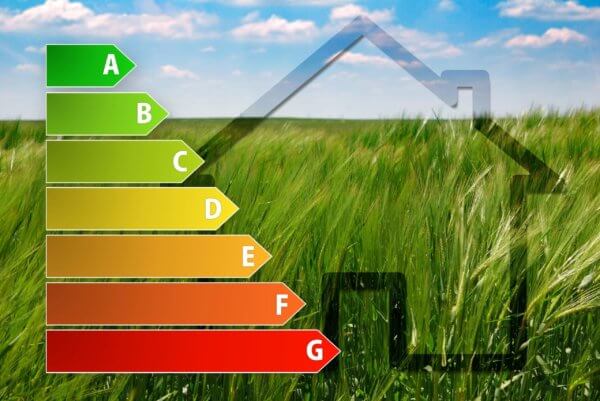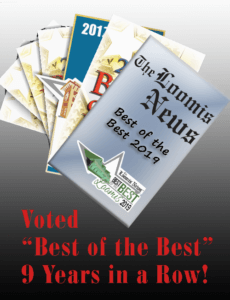Understanding SEER Ratings and Why They’re Important
- HVAC

Replacing your old air conditioner can be an expensive undertaking. You’ll want to know everything you can about your various options to help you make a more informed decision on which unit is best for your home and your budget. The size of the air conditioner you need is determined primarily by the total square footage of your home and the climate where you live, so the main factors that you’ll want to consider are energy efficiency and price. These factors are generally tied directly to one another as the more energy-efficient the unit is, the more it typically costs. In order for you to compare the energy efficiency of different AC units, you’ll need to know a bit about SEER ratings.
What Is a SEER Rating?
SEER stands for “seasonal energy efficiency ratio,” and this is the measurement used to judge the energy efficiency of central air conditioners and other cooling equipment like heat pumps and ductless mini-split ACs. The SEER scale makes it easy to compare the estimated annual energy usage of different air conditioners. In this way, you can better judge whether the estimated energy savings from a higher SEER unit are enough to offset the additional up-front cost.
To make things easier for consumers, the EPA has a number of tools available online that allow you to input your location and the size of the AC unit you need so that you can estimate how much your annual cooling costs would be based on different SEER ratings. Generally speaking, your cooling costs will be reduced by an average of 7% for every 1 SEER. For example, a 15 SEER unit would use approximately 7% less energy than a 14 SEER AC unit of the same size.
How Is SEER Calculated?
SEER is an important measurement that makes it impossible to more accurately gauge approximately how much energy an air conditioner will use throughout one cooling season. Without SEER, it would be impossible to get an accurate measurement of energy use because the specific amount of energy the unit will use on any given day can fluctuate dramatically depending on the outdoor temperature and humidity level. This makes it impossible to get an accurate snapshot of the unit’s energy usage, which is why SEER looks at the entire cooling season.
On average, an air conditioner will run for a total of 1,000 hours in a cooling season. To calculate SEER, you first need to take the unit’s cooling output, which is measured in British thermal units, or BTUs, and multiply this by 1,000 to get the total cooling output over the course of the season. Next, you take how many watt-hours of electricity the unit uses and multiply this by 1,000 as well to find how much total energy the unit would use throughout the season. Finally, you take the total BTUs and divide this by the total watt-hours to find the SEER value.
This calculation can be incredibly handy if you don’t know the SEER rating of your current AC unit. By calculating the SEER, you can then estimate how much energy you could save by upgrading to a higher SEER unit.
Federal Energy Efficiency Standards
The U.S. Department of Energy has federal minimum efficiency requirements for all new HVAC equipment. For air conditioners are other cooling equipment, the minimum energy efficiency required by law is 14 SEER in California and the southern U.S. and 13 SEER in all northern states. Beginning in 2023, these minimum efficiency requirements will rise to 15 SEER in the south and 14 SEER in the north. If you’re considering replacing your air conditioner and energy efficiency is not your primary concern, it makes sense to do it now since a new unit will cost you a bit more once the new efficiency requirements take effect.
Before 2016, the minimum required for all parts of the country was 13 SEER, and it was only 10 SEER up until 2006. This means that if your current AC was installed prior to these years, even upgrading to the minimum 14 SEER could still reduce your annual cooling costs by anywhere from 7 to 28%.
Improving Energy Efficiency
Air conditioners have improved dramatically over the past few decades in terms of energy efficiency mostly because of advancements that have reduced the amount of electricity that the AC compressor needs to function properly. In the past, all AC compressors were single-stage units, which meant that they could only run at one speed.
Most lower SEER units are still single-stage, but the higher SEER units now are generally always multi-stage or variable compressors. This means that they can slow down and use less energy during times when the home doesn’t need as much cooling such as early mornings and at night. Although the system will still run occasionally during these times, the flow of refrigerant will slow down since the system won’t need to absorb as much heat from the building.
How to Choose the Best SEER Rating for Your Home
Most central air conditioners range between 14 and 20 SEER although there are models that go as high as 27 SEER. This means that you have a lot of choices in terms of energy efficiency. As a result, it is always helpful to compare potential energy savings and purchase prices.
Specifically, you’ll want to calculate approximately how much your total energy costs would be over the expected life of the unit to determine whether a higher SEER model is worth the added cost. You can do this by taking your electricity rate and multiplying it by how many kilowatt-hours the unit would be expected to use in one summer. You can then multiply this number by how the expected lifespan of the unit to determine the total expected energy costs over the life of the unit.
The average lifespan of a central air conditioner is around 10 to 15 years. In hotter climates like those in California, you will likely end up on the lower end of this range since your AC will see much more use. Heat pumps will generally last for around eight to 12 years while ductless mini-split ACs can last for anywhere from 20 to 30 years.
Although the highest SEER units can be a great choice if energy efficiency is your main concern, the fact is that most people tend to choose a model in the lower to mid-range as these tend to offer the best value for your money. Unless you’re on an extremely tight budget, you probably don’t want to choose the bare minimum since, in the long run, it will end up costing you much more in energy. On the other hand, you also probably don’t want to go too high either since the added energy savings will generally never offset the additional costs.
Ensuring your home stays cool throughout the summer is obviously important, but it can also be quite costly. This is where SEER comes in handy by enabling you to estimate your expected costs and determine what unit is best for your budget. At Crystal Blue Plumbing, Heating & Air, our expert technicians can evaluate your home and help to ensure you get the best air conditioner for your needs. We have been providing exceptional heating, cooling, and plumbing services to customers in the Sacramento area for more than 40 years, and we have the experience to help you ensure your home is comfortable all year long. If you have any questions about SEER ratings or your options for a new air conditioner, give us a call today.







